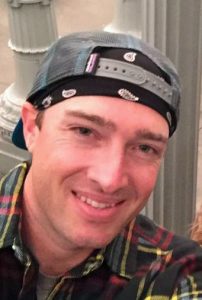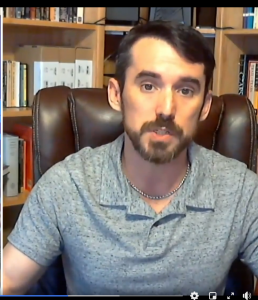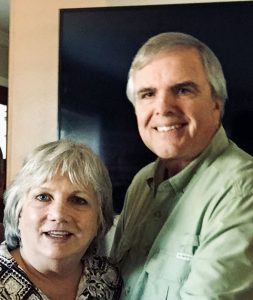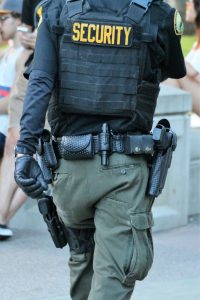by Dave Waddell
Editor: This is part 1 in a three-part series based on newly released documents.
Billy Aldridge, now second in command at the Chico Police Department, seems to have stood on the sidelines four years ago while underlings rammed into a downtown restroom and, 42 seconds later, shot Tyler Rushing to his death.

Tyler Rushing
Aldridge, then a lieutenant and now Chico’s police commander, became vocal after the shooting, ordering several officers who witnessed the incident to quit talking and directing another to turn off his body-worn camera.
Those details and numerous other facts not previously disclosed by authorities are coming to light following the release to this reporter — under threat of a lawsuit — of videotaped officer interviews. However, both Chico Police Chief Matt Madden and Butte County District Attorney Mike Ramsey have refused to release reams of investigative reports about the Rushing case, as well as about other recent officer-involved killings by Chico PD, including the deaths of Desmond Phillips in 2017 and Stephen Vest in 2020.
Madden’s and Ramsey’s efforts to keep these public documents hidden from public scrutiny fly in the face of a number of recent changes in California law, including SB 1421, aimed at making police agencies more transparent and accountable. Ramsey and Assistant County Counsel Brad Stephens have not responded in recent months to several Public Record Act requests, even though a timely response is required by law.
Scott Rushing of Ventura, Tyler’s father, said none of the newly disclosed videos of interviews of five Chico officers, Butte County sheriff’s deputy Ian Dickerson, and two private security guards — all conducted within a few hours of the July 23, 2017, shooting — were turned over to the Rushing family during the discovery phase of their wrongful death suit against the city.
“Just that on its face is pretty weird,” commented Seth Stoughton, a law professor and police use-of-force expert, about Chico PD’s alleged failure to disclose the videos. When asked about Scott Rushing’s claim to have not received the videos, Sharon Medellin, a senior partner at the law firm of Alvarez-Glasman & Colvin which represents various Chico defendants in the case, declined comment, citing the ongoing court case.
The case is on appeal after the Rushings lost the first round in federal court, with a hearing scheduled Oct. 5 at the U.S. Court of Appeals for the Ninth Circuit in San Francisco. The Rushings hired two veteran appellate lawyers, Dennis Riordan and Ted Sampsell-Jones, who will argue why the case should be sent to a jury trial.
Neither Aldridge nor Madden responded to requests for comment about Aldridge’s handling of the Rushing incident. City Attorney Vince Ewing said, “The City of Chico has no comment on this pending litigation.”
Stoughton, an associate professor at the University of South Carolina, previously worked as a Tallahassee police officer and state investigator in Florida. He testified for the prosecution at the trial of George Floyd’s murderer, former Minneapolis police officer Derek Chauvin.
Stoughton said normally the highest-ranking officer present exerts “command and control” over any “dynamic entry, especially one involving a [police] dog,” given the inherent unpredictability of canines.
“I would expect a lieutenant to be calling the tactical shots” in the Rushing situation, Stoughton said.
Policing experts hired by the Rushing family argue that a SWAT team should have been summoned the moment Tyler Rushing told officers, falsely as it turned out, that he was armed with a gun inside the restroom. Stoughton agrees and has little patience with police claims that they busted in to keep Rushing from bleeding to death.
“And how’d that work out?” said Stoughton. “It reminds me of the Vietnam-era saying, ‘It was necessary to destroy the village in order to save it.’ … Well, there’s a better way to handle these things, and if the goal was to get the guy some help, they totally failed.”
On the night he died, the strangely behaving, 34-year-old Rushing, was first shot by private security guard Edgar Sanchez after attacking Sanchez with a flower pot at a closed downtown Chico business. For at least 20 minutes, Sgt. Scott Ruppel calmly tried to talk Rushing out of a restroom into which he had fled, but got little response beyond Rushing’s loud moaning from the pain of a serious chest wound. Police eventually busted in with a biting police dog and Tyler is believed to have hit officer Cedric Schwyzer in the head with a piece of porcelain from a broken toilet and then struck Ruppel in the neck with a Chico PD-issued ballpoint pulled from Schwyzer’s pocket as Rushing flailed. Ruppel then pulled his Glock and shot Rushing twice at nearly point blank range, including once in the back.
If Schwyzer had been part of a SWAT raid, he would have been wearing a Kevlar helmet, as opposed to a ball cap, preventing or lessening his injury, and he would not have had a ballpoint pen sticking out of his shirt, noted Stoughton. SWAT squads often are equipped with devices that help police gain greater vision into a room from the outside, he added.
Aldridge arrives
Video from a body camera worn by Chico officer Darrin Brown shows Aldridge soon after the then-lieutenant arrived outside Jack’s restaurant, which is kitty-corner from Mid Valley Title and Escrow Co. at the intersection of Sixth and Main streets. Rushing was holed up in the title company’s women’s restroom. The time was 11:32 p.m., 18 minutes before Ruppel rammed open the door.

At Sixth and Main, Aldridge, who officers called “L.T.,” got a brief rundown from Brown and another officer on what had transpired, the videos show. When Aldridge asked whether an officer was checking on Sanchez at the hospital, Brown said “not yet,” that all police personnel were working the Mid Valley incident. It was not the answer the lieutenant seemed to be looking for, as he turned his back and walked across Main Street toward Mid Valley. When Aldridge was out of sight, Brown said, “Everybody’s here. We don’t have anybody to go to the hospital.”
About four minutes before Rushing was shot, Brown told another officer standing next to him on the “perimeter” that he expected the SWAT team to be called out if Rushing didn’t come out soon. “They have him isolated to a room,” Brown said. “So, I’m suspecting … if it goes much longer, they’ll probably do a call-out.”
Brown said that he had hoped, once the barricaded man heard the incessant whining and barking of the Butte County sheriff’s canine Tig, the man would surrender. “Tig is a very loud dog,” said Brown, a former Butte sheriff’s deputy. “He can’t be quiet to save his life.”
Instead of giving himself up, Rushing, upon Tig’s noisy arrival, locked the restroom door for the first time and kneeled in a corner so that when the door was forced open, he was behind it.
Dickerson had been a deputy for 2 1/2 years and worked with Tig for about a year. “This is the first bite that he’s had on a subject for apprehension purposes,” he told investigators. Dickerson also asserted that canine officers are trained “to take over a scene basically.”
Dickerson’s plan was that, once the door was busted opened, officer Cedric Schwyzer would enter first with a ballistic shield, followed by Dickerson with Tig, then officer Jeremy Gagnebin with a “less lethal” bean-bag shotgun, and then Ruppel, with, if necessary, his lethal-force pistol.
“He [Ruppel] advised that he understood my request, that he wanted the dog,” Dickerson told investigators.
Shortly before the door was breached, however, Schwyzer questioned Dickerson about the wisdom of four guys and a dog rushing the restroom into uncertainty.
“How about,” wondered Schwyzer, “instead of getting all jammed up, booting that door open and then retreating real quick so we have the door open so we have a visual?”
“We want the element of surprise,” Dickerson replied, apparently deciding the matter.
Stoughton, the use-of-force expert, was asked about Dickerson’s representation of his role as a canine officer.

“For scenes where the canine is being deployed to do what only a canine can do, officers should definitely follow the direction of the handler,” Stoughton wrote in an email reply. “For example, if a canine is trying to track someone, the handler calls the shots because they know how to run a track and other officers don’t.
“When a canine is being used as a force option, though, there’s no reason to cede operational control of the scene to the canine officer. Assuming there is time (as there was in this case), whoever is in charge of the scene should consult with the canine handler about whether and how to use the canine, but the handler is going to be busy actually handling the canine so someone else needs to have command and control of the officers.”
Officer Ryon Mitchell’s body camera footage shows Aldridge entering the Mid Valley building about five minutes after shots were fired by Ruppel. He asks about the locations of the bean-bag shotgun, the ram and the shield before directing his attention to several officers chatting with medics around Rushing’s body.
“You guys were all witnesses?” he asks. The officers nod. “So, no talking,” Aldridge tells them, slashing his extended fingers first across his throat and then straight up.
A few minutes later Aldridge asks officer Mitchell if his body cam is on. Mitchell moves his hand to the camera and apparently nods.
“OK,” says Aldridge.
“Turn it off?” asks Mitchell.
“Yeah, you can end it now.”
Dickerson deemed decisive
The newly released video interviews were shared with Scott Rushing, who was asked what about them he found most significant. “The higher degree of control that [Butte County K9 deputy Ian] Dickerson had over the extraction of Tyler [from the bathroom],” Rushing replied.

Paula and Scott Rushing, Tyler’s parents.
After talking Rushing out didn’t work, Ruppel decided that a police dog would be used to help remove him. None of Chico PD’s K9s were available, so Dickerson and Tig were called in from the Sheriff’s Office.
Butte sheriff’s canines are trained to “bite and hold” suspects on order of their handler. A problem in the Rushing case was that Tig repeatedly bit but did not hold.
Stoughton, in his book “Evaluating Police Uses of Force,” wrote that “bite and hold” is a common approach that “relies in large part on the dubious assumption that the canine’s bite will, though pain compliance, induce a subject to stop moving or to follow officers’ verbal commands. Experience and common sense call the assumption into question; individuals bitten by dogs, including police canines, may reasonably be expected to react to a bite by physically struggling to escape the bite, rather than becoming quietly compliant. This observation has led many police agencies to instruct handlers to keep in mind that struggling is the natural result of a dog bite.”
Rushing said he suspects that DA Ramsey, in his report, deliberately understated Dickerson’s role in the incident in order to try to reduce Butte County’s liability should the Rushings’ lawsuit eventually succeed.
“The withholding of those videos damaged my legal team’s ability to pose the proper questions in depositions,” Rushing said. In fact, he added, Dickerson wasn’t even deposed by the plaintiffs because Ramsey’s report on the shooting underrepresented the deputy’s involvement.
“Ramsey cherry picks facts, omits facts, and speculates about details” to the benefit of the involved officers, Rushing said of Ramsey’s report on his son’s death.
The DA determined that Ruppel and Sanchez committed no crimes in their shootings of Tyler. “Officers showed patience and restraint in attempting to wait out the subject in the bathroom, but as his blood seeped out from under the door – evidence that he was most likely dying – their subsequent actions were driven by the circumstances rather than any desire to rapidly end their wait,” Ramsey wrote in his report.
The newly released videos by Chico PD also revealed that Sanchez was nicknamed “Little Robo” by his co-workers. The tag was an apparent reference to the “Robo Cop” films in which the title character was armed and heavily armored. As a guard, Sanchez stood out at public gatherings for the amount of police paraphernalia he carried on his person.
Chico PD released for the first time videos of investigators’ interviews of Sanchez as well as of Michael Rafanan, who like Sanchez was a sergeant at the time of the shooting for Armed Guard Private Protection. Rafanan smiled as he told an investigator about Sanchez’s uniform.
“He’s not missing anything visually,” Rafanan said. “We call him ‘Little Robo’ because he carries a lot of stuff on him. He’s got lights on his vest. He’s got a taser. … He’s got a plate carrier [soft body armor].”

Rafanan told an investigator that it was company policy for guards encountering a burglary to call the police and “wait at the door.” The Rushings fault Sanchez for immediately pulling his Glock, squeezing through a broken fence into an exterior area attached to Mid Valley, and then using only a light on his gun for illumination. Tyler Rushing came out of the bushes and hit Sanchez with a flower pot, severely cutting his arm. Sanchez fired a bullet into Rushing’s chest.
“I was trapped in the worst possible place at the wrong time,” Sanchez told investigators. “I was going to die if I didn’t do anything. I was trapped in the corner.”
This story is the first in a three-part series on the Rushing and Desmond Phillips killings based on newly released documents. Contributor Dave Waddell is working on a book about Butte County law enforcement killings.

Thanks to the persistent efforts of Dave Wadell and his attorney the city and county have released information about the killing of Tyler that, according to the California law SB1421, should have been released to my legal team years ago. Not having this newly released evidence jeopardized and obstructed the ability of my lawyers to make the most effective legal case possible for Tyler. I am no judge or District Attorney but this article raises the question, isn’t the withholding evidence illegal or unethical or both?
my mother Eithne Tyler was removed from her home at 331 legacy lane chico ca and taken to 24000 wildwood canyon road newhall ca despite all the police calls to 24000 wildwood canyon road newhall .mom and dads estate was looted accounts drained yet chico pd or the da have done nothing to investigate.Are they both incapable of investigating these suspected abuse claims ?
You ask a good question and it should be answered by law enforcement officials from Butte County and Chico PD.
Excellent reporting Dave Waddell.
Thank you for your reporting. I’m wondering if the Department of Justice might soon have cause to begin a Patterns and Practice investigation on Chico and Butte County?
Elizabeth – I agree! Many thanks to Dave Waddell for his persistence. I’ve just read the second installment – outrageous! Hopefully, this is a game changer for Chico PD and Mike Ramsey!
“No comment” is the only response from your imperious DA and his acolytes Honea, Madden, and County Counsel Brad Stephens will give to Dave Waddell. Is that response that law enforcement officials in Butte County call transparency? The DA proudly brags that “NO ONE IS ABOVE THE LAW.” Hey, voters of Butte County, I am calling you out… doesn’t it appear that you have some elected officials that have placed themselves “above the law?”
I can’t say that I’m surprised at the lies,corruption, secrets of Butte County law enforcement, D.A. City Council but the dark is coming to light Thank Dave Waddell Leslie Layton for such fine work.